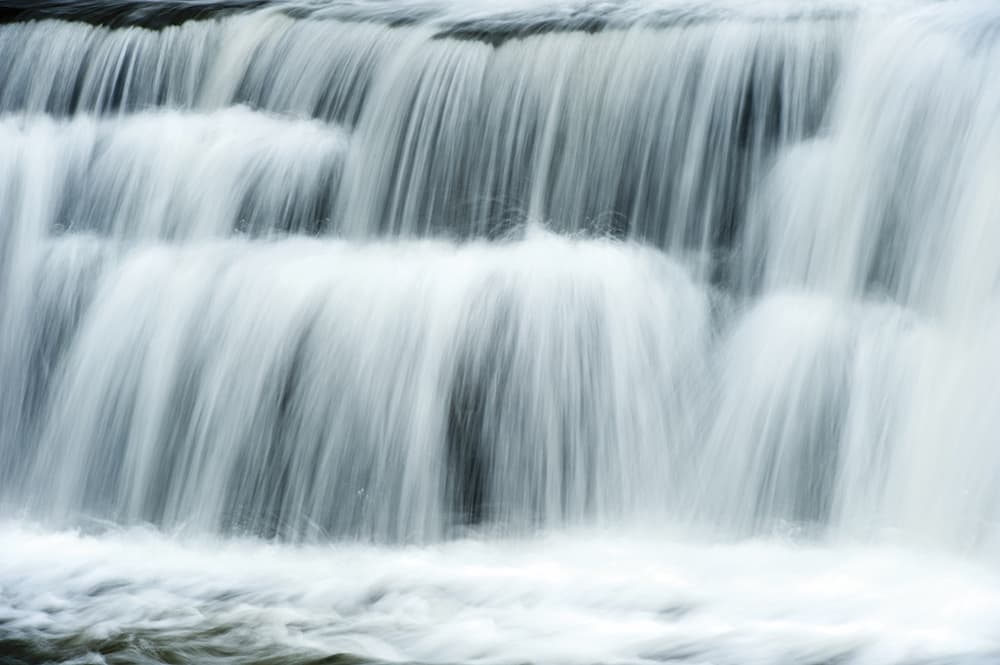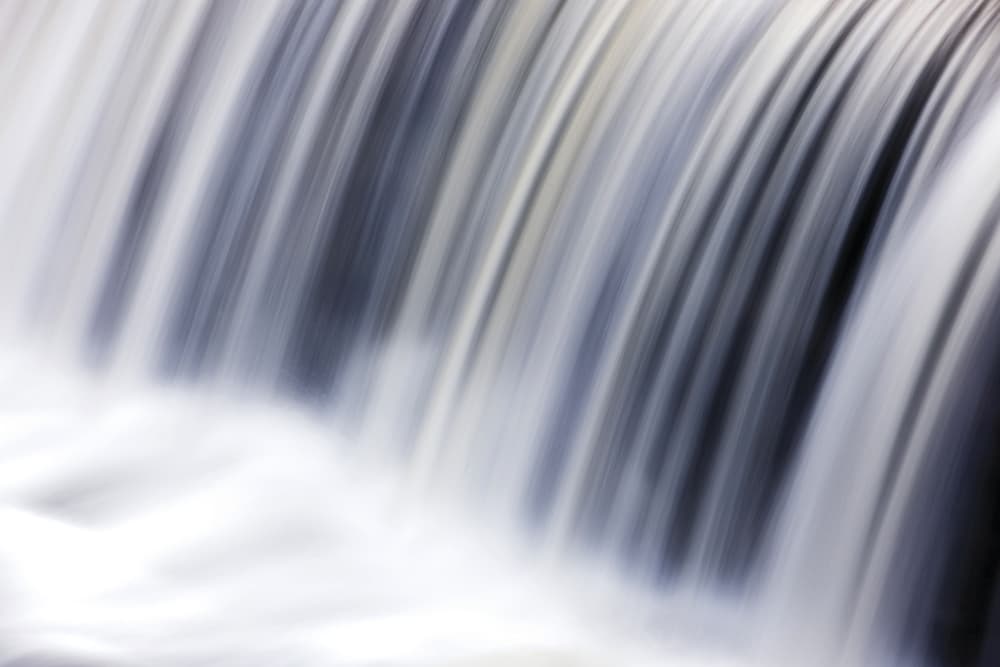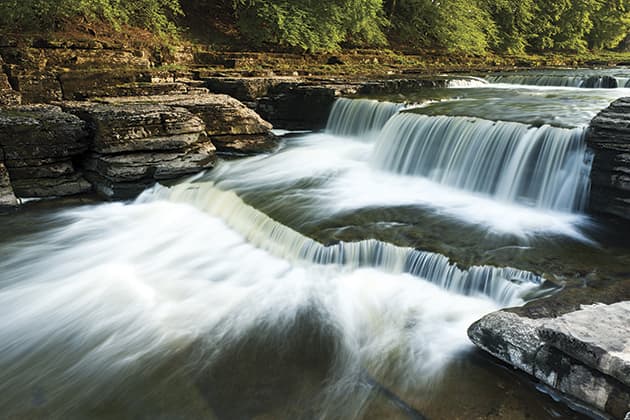Although reasonably well known before, it was the movie Robin Hood: Prince of Thieves, starring Kevin Costner, that put Aysgarth Falls in the tourist limelight. Fortunately, it is still possible to shoot the falls with few people around, but only if you choose your moment or time of year carefully.
The series of falls lies just outside the small village of Aysgarth, within Wensleydale, itself in the Yorkshire Dales National Park. They are in three groups called High Force, Middle Force and Lower Force. All three are worth a visit since they have very different characteristics.
For me, Lower Force is the most photogenic of the three. Being slightly farther away from the car park, it attracts fewer visitors, too. There is an unofficial path down onto the rocks, which can be tricky for those not steady on their feet. Once there, you have the option of long lens views, close-ups of the pools and eddies or wideangle images from the foot of the falls.
Be careful near the river’s edge as the rock surfaces are uneven and could be wet, icy or slippery. The water is deep and fast flowing. If you want to play it safe, you can stick to the designated viewing areas, but for the more adventurous there is scope for good images along the riverbank at all three falls.
Meanwhile, the surrounding area is covered in deciduous woodland, and in the spring and summer there are plenty of wildflowers to be photographed. The area is also a bird watcher’s paradise, so take your binoculars.

Lower falls shot with a 200mm lens. To find this viewpoint you have to walk through a gully in the rocks
Shooting advice
Best time to visit Aysgarth Falls
The waterfalls at Aysgarth can be shot at any time of the year, but in winter the flipside of all that dramatic ice, and possibly snow, is that the trees are bare, making the location look a little bleak. Close-ups and detail shots are possibly the best approach at such times. Spring can be pleasant with fresh greens on the trees, and wildflowers on the riverbank. Keep your eyes open for fish trying to leap up the falls on the way to their spawning grounds. Mid-summer is best avoided because of the huge number of tourists the falls attract in the holiday season. For me, the best time of year to visit and shoot Aysgarth is autumn. Then, autumnal foliage reflected in the water, a sprinkling of frozen puddles and eddies, and fewer visitors make for a better shooting experience.
Food and lodging at Aysgarth Falls
The National Park information centre has a small tearoom, but below High Force and just over the bridge in the old mill building is Mill Race tea shop, which I have been told is good. In the village itself are two pubs, and Hamilton’s tea room, which has excellent reviews.
There are plenty of B&Bs, but the Aysgarth Falls Hotel is particularly good. A few miles down the road in Hawes is the Stone House Hotel, which is also excellent.
[collection name=”medium”]
Parking
None of the falls is more than a few minutes walk from the pay-and-display car park at the National Park visitor centre, which is well signposted from the main road. The car park is busy in the holiday season, as are the surrounding roads and lanes, so plan your visit carefully.

Abstract image of the upper falls. This is the easiest part of the falls to get to, but it gets busy in summer
Kit list
Lenses
Anything from a wideangle lens to a moderate telephoto will be useful at Aysgarth. If you are into wildflowers and fungi, a good macro lens of about 100mm will be handy, too.
Filters
When shooting fast-flowing water, filters are essential. A polariser will take the sheen off water and saturate colours. A Lee Big Stopper, Little Stopper or a Pro Glass 3-stop filter will give water a touch of blur and motion. For long exposures, a cable release is essential.
Tripod
A sturdy tripod is a must for long exposures. It can be a bit of a pain to carry, but it’s really worth it.
Jeremy Walker is an award-winning photographer and Nikon Ambassador. He has years of experience in landscape and location photography. www.jeremywalker.co.uk







